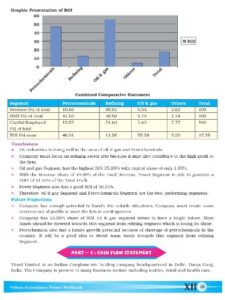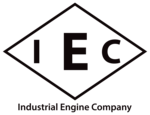
Perhaps the biggest downside to using this free product is that it isn’t scalable on its own. Plans range from $19 to $60 per month (minus an introductory discount for the first several months), and if you accept bank transfers for payment, you’re only charged a 1% ACH fee. There’s a free trial available, so you can test FreshBooks before you commit to an annual subscription for the app. It’s also a good choice for businesses with employees who need to track billable hours—it includes time tracking on all plans. Square Invoices doesn’t limit the number of invoices you send or the number of accounting basics customers or users you have on your system.

Compare QuickBooks Alternatives
While we found GnuCash requires manual data transfer from mobile to desktop, its focus on privacy and security makes it an attractive option for many companies. This accounting solution touts an unbreakable audit trail, with transaction documentation for consumers and auditors of financial reports to help identify internal fraud or data breaches. You can even eliminate the cost of reissuing lost or stolen checks through their add-on ACH direct deposit module, lending security to your accounting technology payroll process. AccountEdge’s audit trail tracking function, a security staple of most accounting software, monitors which users create and edit transactions. You can also establish a lock period, disallowing data entry before a specified date.
ZipBooks’ paid plan starts at $15 a month and offers better bookkeeping and automation features than its free accounting plan. ZipBooks’ iOS app has disappeared from the App Store, and it’s never had a Google Play app worth mentioning. Yes, many non-cloud based accounting software options offer integration capabilities with other business tools such as CRM software, inventory management systems, and e-commerce platforms. Sage Accounting is one of the most well-known free accounting software and is used as desktop accounting software for small businesses. General ledger, A/P, A/R, cash and order management, bank feeds, and purchasing are just some of the sophisticated fundamental accounting functions offered by this non cloud-based accounting software.
- Additionally, you need thorough documentation to secure a small-business loan or appeal to eventual shareholders.
- In other words, doing accounting by hand is possible—but it’s also more complicated, time consuming, and error-prone.
- You aren’t limited by the number of invoices you send on any plan, but lower-priced plans limit the clients you can bill and manage.
- Beyond its core accounting capabilities, Xero offers an elevated experience for its record-keeping features.
Best for small business
There’s also Square’s team management app that you can add on for free to track time for invoicing. The cloud-based solution lets you run your business wherever you are, as long as you have an internet connection. It provides customizable invoice templates and multiple payment gateway integrations, and it supports various payment methods, making it suitable for businesses of different sizes and industries. However, it has no live bank feeds or other essential bookkeeping features like paying bills or reconciling your account, features that QuickBooks does offer.
Best for Managing Expenses
The biggest advantages to using QuickBooks are ease of use, seamless integrations and ubiquity. So, many businesses have adopted QuickBooks, so it can be helpful to use the same software as clients, depending on the type of business you run. However, there are many alternatives to QuickBooks that cost less and have similar features that can work for your needs. We wanted to gauge the opinions of real users of these QuickBooks alternatives and turned to third-party websites to get a gauge of how these customers felt about their experiences with them. Zoho Invoice makes it easy for small businesses to go from estimate to project to invoice to payment without having to pay for the software to make it possible.
We tested the top web-based accounting software for small businesses and mid-sized companies, i.e. QuickBooks is an excellent option for accounting and invoicing software but there are viable alternatives that may fit your business better. For example, if you’re looking to save money on payment processing, QuickBooks Payments might not be right for you and you may want to choose Xero, which lets you choose your own payment processor. Additionally, the highest tier lets you create invoices and accept payments in multiple currencies, so this is a viable option for international businesses. The lowest tier is affordable, but the invoice limits are too limiting—your count applies to sending and approving invoices.
Central to its universal appeal is a simplistic dashboard design that lets multiple users makes use of its many and varied features and functions. Beyond basic accounting functionalities, Manager.io offers many features, including investment recording, performance tracking of various asset types, and specialized fund accounting. It also covers essential processes like bank reconciliation, expense tracking, and payroll management. We like that Manager.io is customizable, allowing businesses to tailor it to their needs by activating only the necessary modules. Additionally, Manager.io is characterized by its responsive development approach, continuously evolving through user feedback. The Lite plan costs $19 per month and limits you to five clients, but it includes essential features to allow you to invoice and charge those clients.
It’s important to note that the cost of accounting software can vary greatly, so it’s important to compare different systems and plans to find the best fit for your business. You can choose a basic system and add à la carte options such as project management or CRM, or you can choose an all-in-one system that includes everything you need. The appeal of FreeAgent is mainly due to its affordability factor, with a range of accounting tools on offer for just a few dollars a month. Accounting software needs to be feature-laden for it to be useful for a small business, and that’s what we looked for when considering QuickBooks alternatives. Quicken is a great alternative to QuickBooks if you’re looking for a way to track spending.
Zoho Books is best for small businesses that are already using other Zoho products and want to integrate their accounting software for a seamless experience. Most accounting software providers offer free trials, so you can try out the software before you commit to it. Many also offer free tutorials and support, what does it mean to be in the black or in the red so you can get help when you need it. Finally, there are many online resources, such as accounting forums and blogs, that can teach you how to use accounting software. If you’re on a budget, you can reduce costs by opting for a less expensive plan, choosing à la carte options or only paying for the features you need. Each report offered a description and useful information to help me interpret the report when I hovered over the question mark in the top corner of each report.
When I clicked “+ create,” then “invoice,” I was taken to a long form to fill out to create an invoice. It was highly customizable, allowing me to answer details about the invoice that would aid in filing it in my storage system and making it searchable. For example, I began by entering basic invoicing information, such as the vendor’s name, the invoice number, the date and the amount and due dates. In addition to its base plan, Neat offers add-on features ranging from $50 to $150 per year, including enhanced customer support and automations. Here is an overview of the pricing and features available in each add-on. Neat offers several key features, including extensive document management features, its patented optical character recognition (OCR) software and its mobile application.
